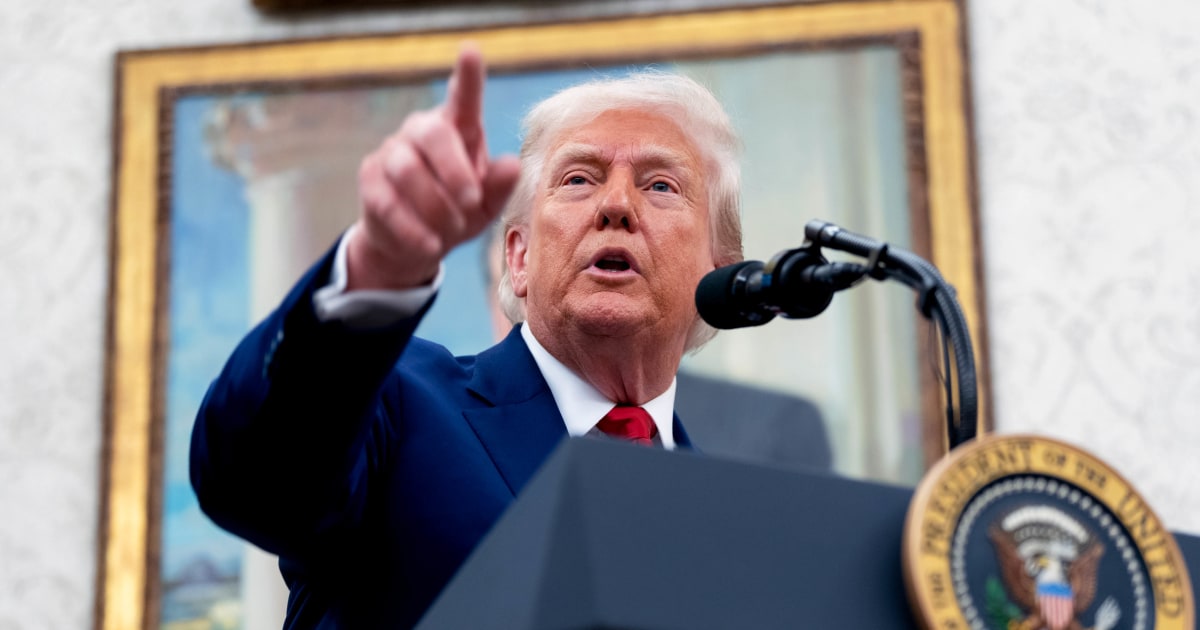Stocks ended the month of May with their best gains since 2023 as investors increasingly sought to put trade concerns in the rearview mirror.
The broad S&P 500 added 6.2% over the past 30 days, while the Nasdaq has surged 9.6% during that period — the strongest performance for both indexes since November 2023. For the S&P, it was the best May since 1990.
The 30-stock Dow climbed 3.9% on the month.
There has been seemingly no end to the market fluctuations that Trump’s trade war has set off. Friday was no exception, with jittery markets opening lower on fresh fears of renewed tensions with China. Yet they ultimately moved higher, ending the day largely flat.
They were helped by reassurances from President Donald Trump later in the day that he did not wish to fully reignite disputes with China. The soothing talk had some echoes of the “T.A.C.O.” meme — “Trump Always Chickens Out” when it comes to conflicts — that gained momentum in investing circles earlier this week. (The president roundly rejected such an assertion when asked by a CNBC reporter.)
Trump set the tone early Friday when he accused China of breaking a handshake pact the two countries made in Geneva earlier this month that had helped ratchet down a trade standoff.
In a post on Truth Social just after 8 a.m. ET, Trump wrote China “HAS TOTALLY VIOLATED ITS AGREEMENT WITH US” and signaled a tough response lay ahead.
“So much for being Mr. NICE GUY!” the president said.
But in remarks to reporters at the White House on Friday, Trump calmed markets by saying he planned to speak with Xi about the rising tensions.
“They violated a big part of the agreement we made,” Trump said, adding: “But I’m sure that I’ll speak to President Xi, and hopefully we’ll work that out.”
The “trade win” that the White House announced May 12 was expected to lead to China removing retaliatory tariffs and a suspension of “nontariff countermeasures taken against the United States.” Both sides agreed to lower tariffs on each other by 115% for 90 days.
In a statement earlier Friday, a Chinese Embassy spokesperson said that while both sides have continued to engage in discussions since the Geneva talks, “recently, China has repeatedly raised concerns with the U.S. regarding its abuse of export control measures in the semiconductor sector and other related practices.”
Multiple media reports this week indicated the Trump administration has ordered U.S. companies to stop shipping high-level goods, like chip design software and chemicals, to China.
Reuters reported Thursday that the new restrictions were likely to escalate tensions with Beijing and “appear aimed at choke points to prevent China from getting products necessary for key sectors.”
“China once again urges the US to immediately correct its erroneous actions, cease discriminatory restrictions against China and jointly uphold the consensus reached at the high-level talks in Geneva,” said the embassy spokesperson, Liu Pengyu.
U.S. Trade Representative Jamieson Greer, speaking on CNBC on Friday morning as Trump posted his message, said “this has been something that we’ve been discussing” since meeting with China in Switzerland. “The Chinese are slow-rolling their compliance, which is completely unacceptable,” Greer said.
“You make every effort to be diplomatic and professional and to do things behind closed doors. But at some point, the impact on on the U.S. economy, or the trade relationship, becomes such that it’s hard to withhold that anymore,” he continued.
On Thursday, Treasury Secretary Scott Bessent said trade talks with China were “a bit stalled.” Bessent said he believed there would be more talks in the coming weeks but “given the magnitude of the talks,” Trump and President Xi would likely need to “weigh in with each other” first.
The matter hit a further snag on Thursday after an appeals court temporarily reinstated a set of tariffs that a federal trade court had voided just hours earlier, casting fresh doubt on the path forward for Trump’s sweeping import taxes. The case is expected to make its way to the Supreme Court.
Since Trump took office, the S&P 500 has fallen approximately 2% — a modest decline that masks substantial weekly and even daily swings.
A Friday report showed consumer spending slowed from a 0.7% rate in March to 0.2% in April — adding to signs that Trump’s tariffs may be leading to an economic slowdown.
The data are “clear evidence that consumers are battening down the hatches,” Fitch Ratings analysts said in a note to clients, adding that Friday’s release from the Bureau of Economic Analysis also showed the highest savings rate since May 2024.
While the release also saw a favorable April inflation reading, the Fitch analysts said the Federal Reserve is “likely to interpret it as the calm before the storm” and continue to move cautiously on interest rates.







